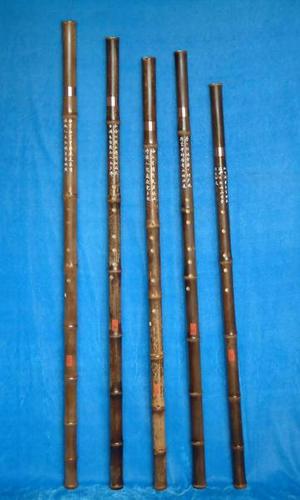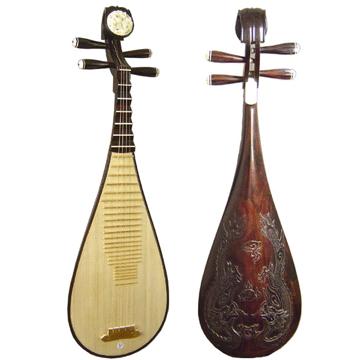 Ancient music. Transition of music over time. Why we played music thousands of years ago and why we play music today. What inspires music. As Diane Ackerman writes so eloquently in her book A Natural History of the Senses:
Ancient music. Transition of music over time. Why we played music thousands of years ago and why we play music today. What inspires music. As Diane Ackerman writes so eloquently in her book A Natural History of the Senses:
“Music, the perfume of hearing, probably began as a religious act, to arouse groups of people. Drums set the heart sprinting in no time, and a trumpet can transport one on chariots of sound. As far back as we can see, people made music. The first instruments used in western music were probably just sticks or rocks thwacked together to make a beat. Mesopotamian instruments have been found dating back some 5,500 years (pipes, triangles, stringed instruments, and drums).
The Mayans played an array of intricately carved clay whistles, flutes, records and ocarinas. Whistles shaped like men produced lower notes than those shaped like women. Some of them had secret chambers and could play as many seventeen notes, others were meant to hold water while you played them, which affected the sound.
According to Chinese texts, Oriental music began around 2,700 B.C. when Huang Ti, the emperor, ordered bamboo pipes of the right length to be cut so he could imitate the song of the phoenix. If one contrasts 2,400 year old Chinese bells with a present day Chinese flute, one finds that the tones are very similar and nearly match on an oscilloscope.”
There’s actually a group whose focus is ancient instruments and music. The Society of Strange and Ancient Instruments was founded in 2010 to explore a repertoire ranging from bawdy ballads to high art music and its members are all leaders in the early music field. They actually have a program in early September dedicated to early instruments and music called “The Ministry of Angels” which uses strange, ancient and ethereal instruments long associated with angels to present traditional tunes, dances, songs and carols in celebration of these heavenly beings. The UK-based event will feature Clara Sanabras on oud, baroque guitar and voice; Clare Salaman on hurdy gurdy, nyckelharpa, vielle, and hardanger fiddle; and Peter McCarthy on three and four string double basses, bass viol and percussion. More information can be found here.
While music was played in multiple ancient cultures, here’s some interesting historical and cultural background on where China fit in.
Ancient Chinese musical instruments were generally divided into eight broad categories. The eight sounds include bamboo, silk, stone, clay, wood, metal, hide and gourd. The below explanations are taken from an interesting site called Ancient China Life: (ancientchinalife.com).
Bamboo: It was widely used for making woodwind musical instruments. Some examples of ancient Chinese bamboo instruments are: Dizi the unique feature of which was an additional buzzing membrane, Xiao also known as an end blown flute, and Xindi which had about 21 holes in the transverse flute.

Silk: These were expensive equipments and usually stringed in nature. Their 3 types include plucked, bowed and struck stringed instruments. The 7 stringed Zither is a good example of a plucked instrument.

Bowed instruments included the ones with a range of fiddles and over a 100 types of instruments were made in this form. The simplest example of a struck instrument is a Yangqin which featured many hammered silk strings on two bamboo poles.
Stone: Stone was basically used for the construction of various chimes like a Bianqing and Teqing. Sound was generally produced by striking on these instruments.

Clay: Fou is basically a clay pot which was played as a percussion instrument in ancient China. Another such example includes Xun.
Wood: The instruments made from this instrument were also most percussion. Zhu and Yu are such examples
Metal: Bells, cymbals, and gongs were the basic instruments made from metal. A combination of all these was used to make wonderful instruments.

Hide: A range of drums were made out of hides to produce a series of sounds. The popular ones included Dagu and Bangu.
Gourd: Mouth organs which were based on free reed used gourd. One particular piece called Sheng was made by inserting bamboo sticks into a metallic chamber which also featured finger holes.
Photo Credits: photo 1: creativetorbay.com, All other photos from AncientChinaLife.com website.

Renee Blodgett is the founder of We Blog the World. The site combines the magic of an online culture and travel magazine with a global blog network and has contributors from every continent in the world. Having lived in 10 countries and explored over 90, she is an avid traveler, and a lover, observer and participant in cultural diversity. She is also the founder of the Magdalene Collection, a jewelry line dedicated to women’s unsung voices and stories, and the award-winning author of the bestselling book Magdalene’s Journey
She is founder of Blue Soul Media and co-founder of Blue Soul Earth as well as the producer and host of the award-winning Blue Soul CHATS podcast, that bridges science, technology and spirituality. Renee also founded Magic Sauce Media, a new media services consultancy focused on viral marketing, social media, branding, events and PR. For over 20 years, she has helped companies from 12 countries get traction in the market. Known for her global and organic approach to product and corporate launches, Renee practices what she pitches and as an active user of social media, she helps clients navigate digital waters from around the world. Renee has been blogging for over 16 years and regularly writes on her personal blog Down the Avenue, Huffington Post, BlogHer, We Blog the World and other sites. She was ranked #12 Social Media Influencer by Forbes Magazine and is listed as a new media influencer and game changer on various sites and books on the new media revolution. In 2013, she was listed as the 6th most influential woman in social media by Forbes Magazine on a Top 20 List.
Her passion for art, storytelling and photography led to the launch of Magic Sauce Photography, which is a visual extension of her writing, the result of which has led to producing six photo books: Galapagos Islands, London, South Africa, Rome, Urbanization and Ecuador.
Renee is also the co-founder of Traveling Geeks, an initiative that brings entrepreneurs, thought leaders, bloggers, creators, curators and influencers to other countries to share and learn from peers, governments, corporations, and the general public in order to educate, share, evaluate, and promote innovative technologies.








